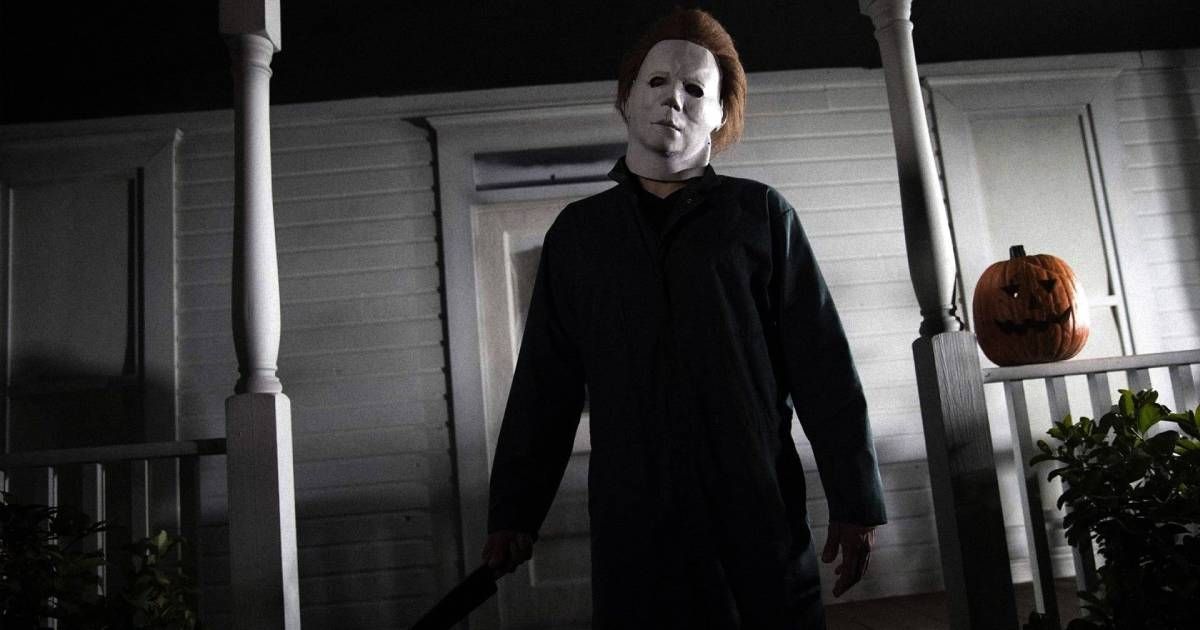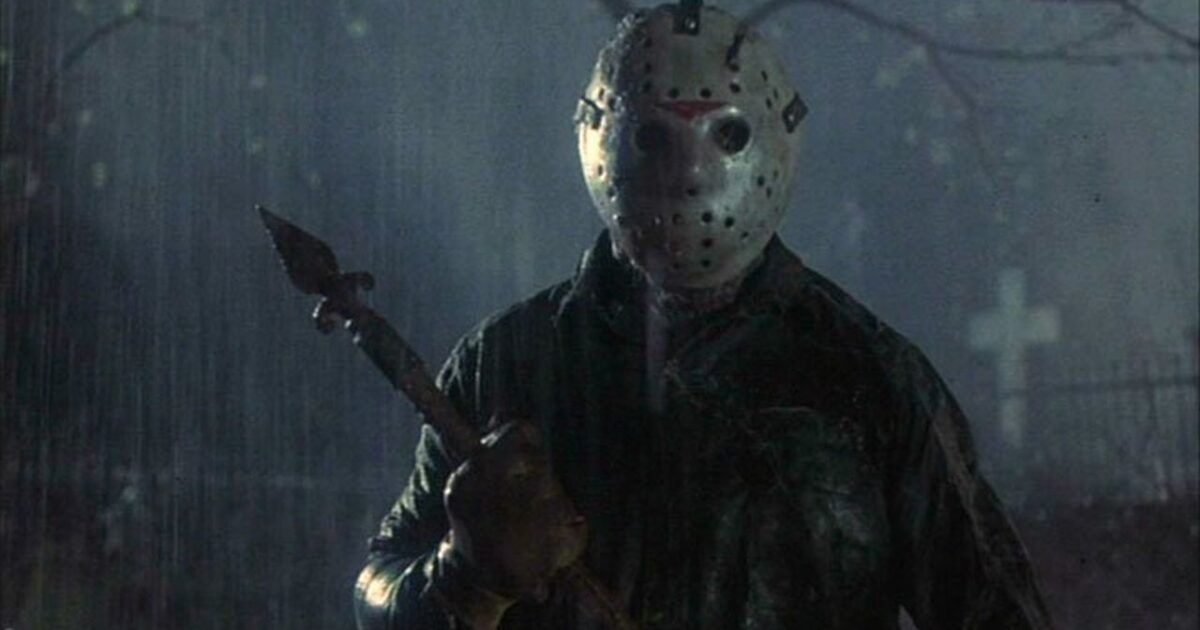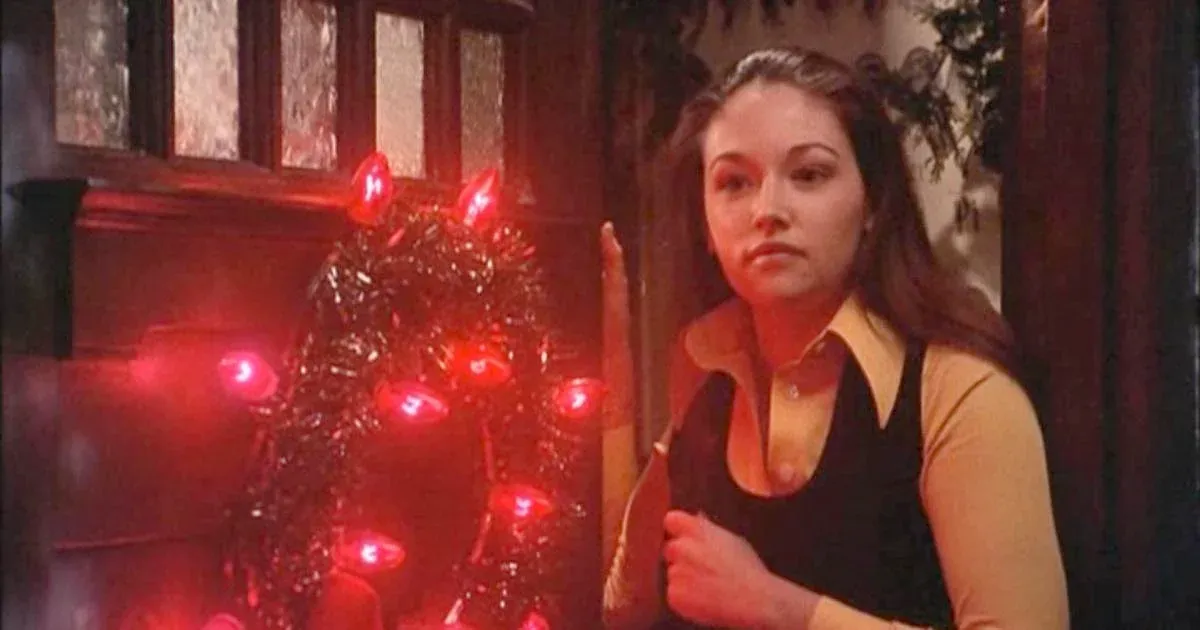There is a grand irony in the conservative efforts (in America and - more famously - abroad) to ban slasher films during their heyday in the '70s and '80s: gratuitous nudity and violence aside, most movies about sexually active teens getting sliced up by a masked madman are politically conservative. The Final Girl trope popularized by these movies depicts a virtuous (that is, abstinent) girl who survives while her hedonistic friends are massacred. Drug use, promiscuity, and independence are the kiss of death, and when the maniac in question lays bloody waste to rebellious teenagers, the queasy implication is that they deserve it.
It's more complicated than that, of course. For one thing, the primary demographic for these films are younger audiences, three-dimensional reflections of the wooden characters ripped apart on screen. The killer is not the hero (per se - we'll get to that in a minute); this is a horror movie, and he is the villain. We're meant to view his crimes as atrocious, right? Isn't his preying on these "morally loose" teenagers a reflection of the audiences' fear of being punished for their own behavior? Doesn't this mean they identify with the victims and not the killer?
Well, yes and no. The origin of the fear is that we'll be punished for being bad boys and girls - but this is rooted in a guilt complex, not a persecution complex. In other words, the slasher archetype (usually) doesn't tap into our fear of being wrongfully harmed by a black-and-white moral paradigm. It feeds on the fear that we really are doing something wrong when we violate an infantilizing ethical code. The slasher is an object of fear, but he is also a force of nature - an agent of divine retribution. When he comes for us, it's because we deserve it.
Add to this the fact that, in most slasher movies, we don't actually care about the teenagers (who are so two-dimensional they could give you a paper-cut): we're there for the kills! Especially as the sequels stack up, the "villain" becomes a hero in our eyes. We come back for sequel after sequel to see him. So yes, the films are marketed to the young and rebellious, and yes, we are meant to enjoy the bare skin, booze, and eroticism - but we, like the characters, are punished for our enjoyment. In this sense, the moral message of the slasher film is conservative, even if your average right-leaning evangelical wouldn't find much to enjoy in them.
Along with Black Christmas (1974) and The Texas Chainsaw Massacre (1974), John Carpenter's Hitchcock-influenced Halloween (1978) laid the foundation for this type of movie, and it bears many of the same tropes (though, of course, they were not yet tropes): an anonymous killer wreaks havoc on naked teenagers (specifically babysitters neglecting their duties), and the only survivor is Laurie Strode, the derided "good girl" who accepts her responsibilities. The killer is somehow more than human: the boogeyman kids look for under their beds. Yet the themes of Halloween are quite different from the copy-cats (and sequels) it spawned. Halloween makes a point of humanizing its victims, and when Michael strikes, it isn't because their hedonism has doomed them - Michael is the manifestation of an oppressive violence festering beneath the surface of suburban morality and sexual politics; and with each kill, that violence claims another victim for failing to conform to restrictive social expectations.
Michael Myers and the Sexual Revolution
It is important to keep Halloween's historical context in mind. John Carpenter's scare-fest came at the tail end of the New Hollywood movement, a shift in the American film industry from studio tent poles to auteur films. These ambiguous, socially minded movies responded to increasing disillusionment in American society, from the Vietnam War to the Watergate scandal, as well as the successes (and failures) of people's movements, particularly the Civil Rights Movement, the Hippy Movement, and the Sexual Revolution. Horror movies became more violent: a nation used to the (newly televised) horrors of war needed more than a creepy house to scare them. With great change comes great fear, and horror films tapped into these fears, for the political right and left (often at the same time).
Halloween also coincides with the rise of modern political conservatism in the '70s and '80s. A far-right reaction to the perceived disintegration of traditional values, conservatism sought a restoration of values corroded by the "degeneracy" of these movements. The white picket fence of the thriving (and segregated, and sexually oppressive) suburban 1950s became a rallying cry. Those who challenged traditional values were demonized.
Michael Myers' first victim was his older sister, a teenager who was supposed to be babysitting him on Halloween night. Instead, she left him to his own devices and spent the night with her boyfriend - so Michael hides his angel face behind an anonymous mask and murders her with a kitchen knife. When he returns to his hometown years later, his victims are almost all sexually active teenagers neglecting the children they're caring for. Michael punishes young women (along with anyone in his way) for their failure to inhabit traditional gender roles. These murders happen under the neglectful eyes of adults unwilling to see the danger that is creeping into their community (a danger that originated there in the first place).
Laurie's friends are definitely irresponsible - but they're teenagers. They are at a stage in their development where they are meant to screw up, experiment, and figure out who they are. In post-sexual revolution suburbia, these teenage girls have more agency than in generations past. They still have to sneak around the prudish gaze of parents and judgemental adults - but there is more understanding for them than there would have been thirty years earlier. The community still abides by traditional, faith-tinted mores, but no one with any kind of nuance is going to severely punish these young kids for their youthful fallibility.
The boogeyman (and the reactionary conservatism he embodies in this film) has no eye for nuance. His face looks human, but it lacks expression, compassion - you cannot appeal to his humanity. As a tool for teaching morality, the archetypal boogeyman threatens children who misbehave in any way. If you lie, if you don't brush your teeth, if you talk back, the boogeyman will get you. This vague malevolent force encourages good behavior through fear of repercussions. Generally, the fear of the boogeyman decreases with age and independence, as the child develops their own responsibilities and moral compass. But in Halloween, the boogie man comes back. He returns for those who have outgrown him. A parallel can be drawn between the resurgence of evangelical conservatism and Michael's return to the suburbs.
Laurie Strode and the Misfortunes of Virtue
Laurie survives as long as she does because she doesn't fit Michael's profile. She is an attentive babysitter who never skirts the responsibility of childcare - but Michael stalks her nonetheless. If we interpret Michael as the specter of an oppressive, black-and-white morality, then the virtuous Laurie should be protected. So why does Michael focus in on her?
The point of Michael Myers and the morality-through-fear he represents is not merely to punish those who do not adhere to that moral paradigm. The punishment itself is less important than the threat of punishment. You are kept in line through fear. Even those who are virtuous are his victims, because their virtue is a cage. Laurie is guilt-ridden, sheepish, despite having done nothing wrong, because she knows she's capable of acting out in the way her friends do. She is haunted by shame, even though she hasn't done anything "shameful".
This comes to a head at the end of the film, when Michael finally comes for Laurie, and she traps herself in a closet (that age-old symbol of repression - and also a pretty inefficient place to hide from a crazed murderer, logistically speaking). In a rage, Laurie stabs Michael with a coat hanger (the political resonance of this object in relation to our topic - female agency in the face of institutional oppression - is probably a coincidence, but definitely interesting ...) and turns his own blade against him. Director John Carpenter has stated that he intended these objects as phallic symbols, with Laurie's repressed sexuality coming out in a fury of self-defense. This explosion of taboo emotion allows Laurie to briefly subdue Michael - but not for long. When he once again comes to, he is shot by Dr. Loomis, the psychiatrist that has been warning us about his danger. This saves Laurie from certain death - but Michael survives. He is still out there.
Dr. Loomis' presence throughout the narrative is as a largely ignored voice of psychoanalytical reason. The presence of a psychoanalyst in American suburbia is a loaded image. Historically, the American suburbs are traditionally oriented centers of white nuclear family life, with an emphasis on the Christian faith, monogamy, and family. The rising popularity of psychoanalysis disrupted this conservative status quo: suddenly people were introduced to ideas as shocking as the id, ego, and super-ego, the Oedipal complex, repression, etc. According to psychoanalysis, antisocial needs lurk in the minds of all people - and the land of apple pie and white picket fences is no exception. Where traditional suburban morality posits sexual desire as taboo and dangerous, psychoanalysis suggests that it is normal, healthy, and that repression is what we should fear.
If we choose to, we can read Halloween's final sequence symbolically, as a sort of therapy session. Michael has a shame-ridden sense of right and wrong that has made Laurie repress parts of herself. When that psychological dissonance comes to a head, she allows these submerged feelings to find catharsis and fights against the shame she has been raised with - this temporarily abates the oppressive specter, but soon guilt floods back in. The appearance of Dr. Loomis can be read as Laurie's time spent on the shrink's couch, unpacking the shame that has followed her throughout her life. A more nuanced view of the human mind allows her to deal with this guilt and self-loathing; but the moral rigidity that demonizes her inner desires is still out there. The threat lives on.




-(1).jpg)
-1.jpg)
.jpg)
.jpg)